(Originally posted by EW Member Karen Lettice Feb 2022.)
Space technology company, Southern Launch, has plans to turn Whalers Way in South Australia into another Cape Canaveral.
The devastating potential risk posed to the endangered Southern Right Whale and many other threatened / endangered species is simply unacceptable.
The Wildlife of Whalers Way needs your help.
#savewhalersway
Risk not calibrated by common sense is recklessness.
We would like to draw your attention to the following disturbing information and ask you to act accordingly. On the southernmost tip of the Eyre Peninsula, a precious corner of pristine wilderness known as Whalers Way is under threat. Southern Launch, a start-up space technology company, is progressing plans to turn this heritage listed area into a noisy, industrial, and even worse, ‘experimental’ rocket launching facility.
Providing habitat for numerous threatened and protected wildlife species, including our beloved Southern Right Whale, Whalers Way is a recognised Conservation Zone specifically protected under both State and Federal environmental laws. As such, it is not a suitable location for any type of industrial development, let alone one that comes with the extreme risks that this one does.
To avoid any confusion over the phrase, “experimental rocket launching facility”, it is not the facility that is being referred to as experimental – in the sense that Whalers Way Orbital Launch Complex is at this stage only a temporary facility, testing its viability under a temporary licence – but the nature of the rockets themselves. This is a facility for launching experimental i.e., formerly ‘untested’ rockets! No wonder then, the one test rocket launch from Whalers Way so far, failed and caught fire. https://www.innovationaus.com/southern-launch-rules-out-using-rocket-that-caught-fire/
Alarmed about the risk of fire and the inevitable effects of noise and chemical pollution on the sensitive ecosystem of Whalers Way, conservationists have pushed back hard against this project. Arguing that the environmental impacts arising from even successful launches will cause accumulative harm over time, they also warn that the risk of a single major failure, which could blast the area with burning debris and fuel, could be so severe as to be immediately catastrophic on local fauna, flora, and human lives.
Experimental rocket launches fail frequently.
Southern Launch CEO says, “… rocket launching is risky…”
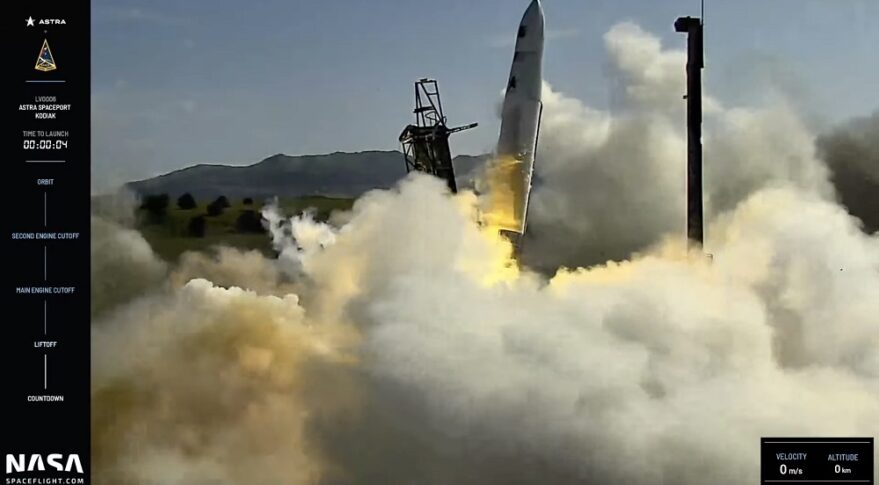
Since it was first announced, South Australian conservation groups have opposed Southern Launch’s choice of Whalers Way as a proposed site for its project. Ecologist, Patrick O’Connor, president of the peak body, Nature Conservation Society of South Australia, says “This site will always be opposed by conservationists, because it is going to do damage to highly valuable conservation assets that are at substantial risk…”
As the following statements reveal, Southern Launch CEO Lloyd Damp has a considerable appetite for risk taking. One that he would have more of us share.
- “Here in Australia, we almost have zero tolerance for risk.”
- “Compare that to America, or Europe, or China, where if a rocket blows up in mid-flight, it’s almost celebrated.”
- “My hope is that over time working with the Space Agency, we can provide education to the community so rocket failures and the development of experimental vehicles is something that we embrace.” https://cosmosmagazine.com/space/rocket-launch-safety/
- “My concern is that if we try and over-constrain what companies can do. Or if (authorities) are not willing to accept some form of risk – rocket launch is risky – it will just stifle the industry. Simple as that.” https://indaily.com.au/news/business/2019/03/26/10-minutes-with-southern-launch-ceo-lloyd-damp/
Endangered and threatened species to be put at risk at Whalers Way include the Southern Right Whale (SRW), Blue Whale, Australian Sea Lion, Long-Nosed Fur Seal, Leather-backed Turtle, Loggerhead Turtle, Western Pygmy Possum, and multiple rare birds like the White-bellied Sea-Eagle, Eastern Osprey, Western Whipbird and Southern Emu-wren.
The risk to the above representative only list, is no less than that posed to the recovery, or even survival, of numerous subpopulations of species facing extinction. As such, ‘no risk’ is the only acceptable level of risk here.
The Southern Emu-wren has received a lot of media attention as an example of a threatened species that, should its Whalers Way habitat be disturbed, degraded or worse still lost, may be pushed to extinction. Keen to quell conservationists’ concerns over the threat to the species, Southern Launch has recently announced it is funding a three-year post-graduate study into the little bird. However, according to Southern Launch’s proposed operations timeline, a permanent facility will be well established before the study has completed its first year.
The Southern Emu-wren may be pushed to extinction.


Ecologist, Patrick O’Connor is not convinced about the company’s motives. Critical that Southern Launch is sponsoring the study purely to gain necessary approvals, he asserts, “…spending a little bit of money on studying birds or watching whether the birds will be impacted or not by the rocket” is a “greenwash” over “damaging species that are already in decline”. O’Connor adds, that by not having a “…genuine orientation towards finding sites that are not going to do this kind of damage…”, it puts a “…little tear in the social license of the space industry”. “The space industry needs to be in line with social expectations across the board, both the proper protection of nature and not the ‘pretending’ that you protect it, when you have to just do the minimum.” https://www.spaceconnectonline.com.au/r-d/5312-southern-launch-s-bird-research-is-only-an-obligation-says-ncssa-president
The minimum is exactly what Southern Launch has done in its Environmental Impact Statement regarding the risk of its operations to the Southern Right Whale. More notable for its omissions than its inclusions, Appendix S, The Marine Ecological Assessment advises that “…there may be occasional debris strike impacts on individual animals on the sea surface but no impact at population level”. (See page 39, Appendix S, Southern Launch EIS.) It warns however – inferring from nonspecific data about phocid seals, since “there are no known criteria specific to airborne sound for whales…” (page 46, Appendix S) – that “Southern right whales very close to shore during the launch may be exposed to sound levels approaching the threshold for temporary hearing loss but could avoid the noise by submerging for less than two minutes.” (page 6, Appendix S), qualifying – on page 46 – that this is “…considered not to be a significant disruption to their behaviour.”
The statement that whales “could avoid the danger by submerging” seems a ludicrous assertion to make within the scope of a scientific analysis. Even if this were true, in the absence of observational data demonstrating this behavioural response to deafening noise, this dubious mitigation measure – that can’t be communicated – is an unsubstantiated assumption. As noted above, the report states, “there are no known criteria specific to airborne sound for whales”. An equally inconvenient truth given brief mention on page 6 of the Marine Ecological Assessment observes, “Mammal reactions to rocket launches are highly variable and may be attributable to the species, age, time of year, air temperature and potential habituation to noise”. Thus, according to the company’s own reference material upon which the conclusions of this risk analysis rest, behavioural response is in no way predictable.
Any noise loud enough to cause temporary hearing loss, is noise loud enough to cause panic, fear, and stress in affected individuals. The whales in this area, known to swim within 1 -3 kms of the launch site, are predominantly calving and /or nursing mothers. Their instinctive response will be one of ‘fright-flight’, to get away from the unknown danger as soon as possible.
Southern Right Whale mother ‘Mazz’ with her calf
in Sleaford Bay on the 7th September 2021
just three days before the first abandoned launch attempt.
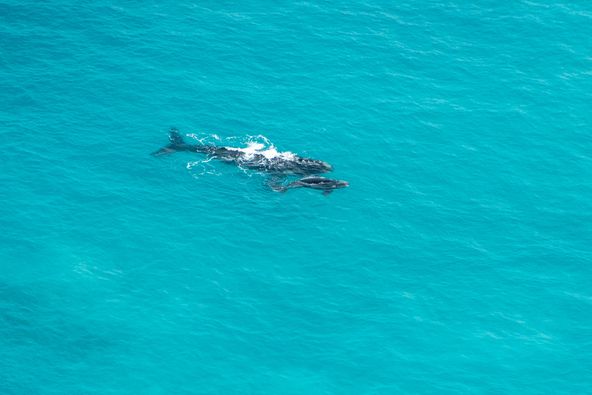
Two mother and calf pairs in residence in the Sleaford Bay nursery area
throughout the entire rocket launch test period of September 2021.
Winkulari’ with calf ‘Gypsy’ (top) and ‘Mazz’ with ‘Mite’ (below)
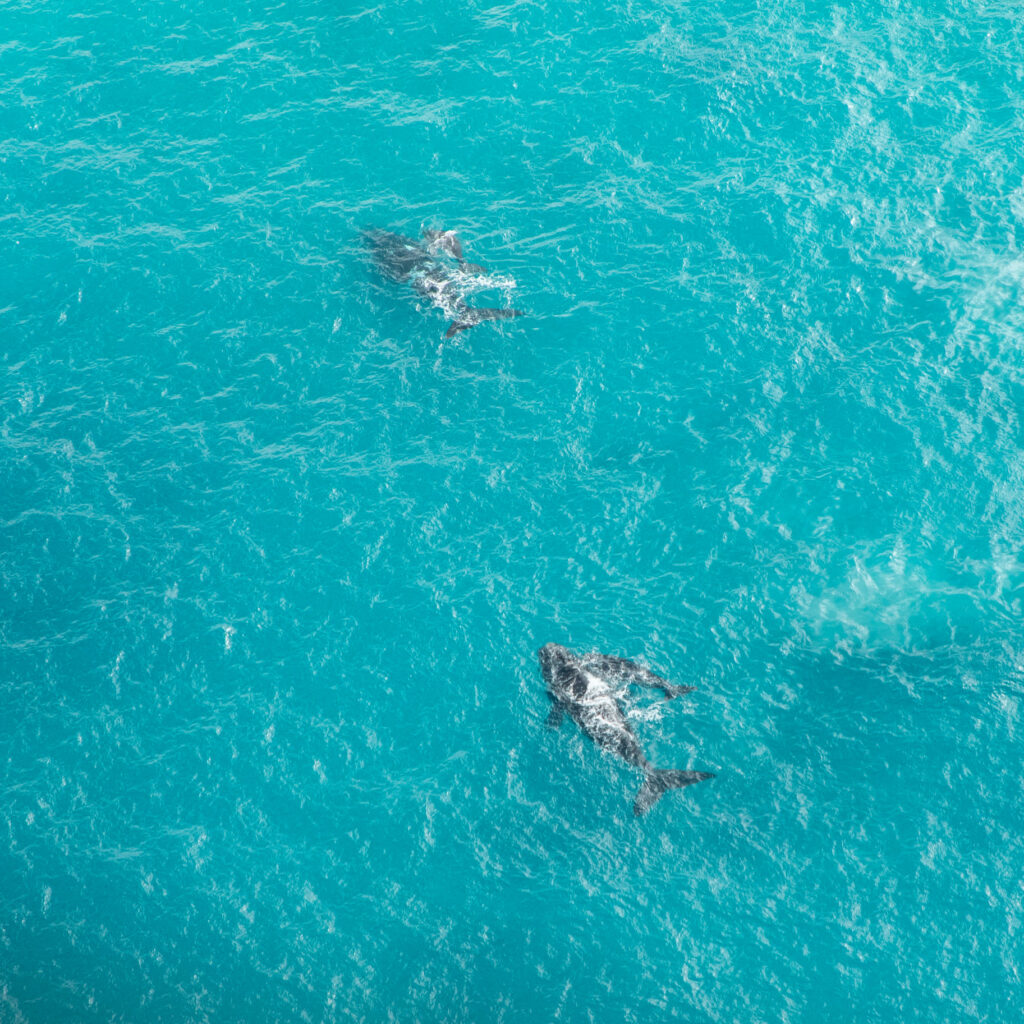
Whalers Way Orbital Launch Complex gearing up for rocket launch in September 2021.
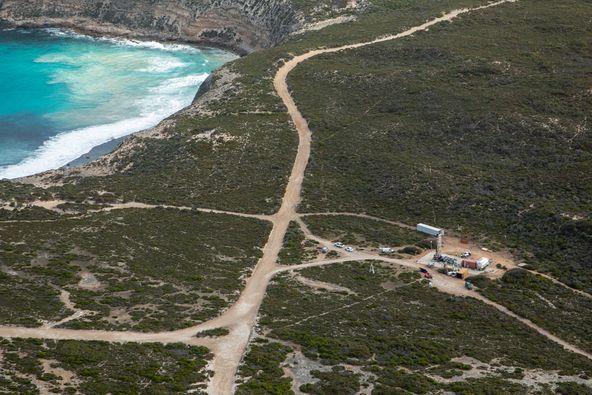
The stress of a pregnant female fleeing the area could have all sorts of physiological implications for both the mother and her unborn. No less so, the stress to a cow fleeing the area to protect her new-born. Apart from the danger of the pair becoming separated due to impaired communication, the risk to the young calf, should it become exhausted in the struggle to keep up, could be extreme. Predators don’t generally bother adult SRWs, but they do attack weakened calves.
Southern Launch would have us believe that any risk posed to the SRW by its planned operations is largely inconsequential. This is simply not true.
The Australian Commonwealth Conservation Management Plan for the Southern Right Whale: A Recovery Plan under the Environment Protection and Recovery Act 1999, 2011-2021, recognises ‘Noise Interference’ and ‘Habitat Modification’ as key threats to the SRW and clearly states that the potential threats posed by noise interference and habitat modification are “…likely to have a population level effect.” The plan specifically mentions aircraft as being a source of hazard, especially where “…whales are spending significant time at the surface, e.g., resting mother and calf pairs.” https://www.dcceew.gov.au/environment/biodiversity/threatened/recovery-plans/conservation-management-plan-southern-right-whale-recovery-plan-2011-2021 Space rockets, especially the larger ones, would be more of an issue. As Damp says, “The bigger the rocket, the louder the noise.” https://www.spaceconnectonline.com.au/launch/5057-asa-announces-lift-off-from-whalers-way-set-for-thursday
SRW ‘Mazz’ and her calf ‘Mite’ in residence at Sleaford Bay
for 63 days of the 2021 whale season.
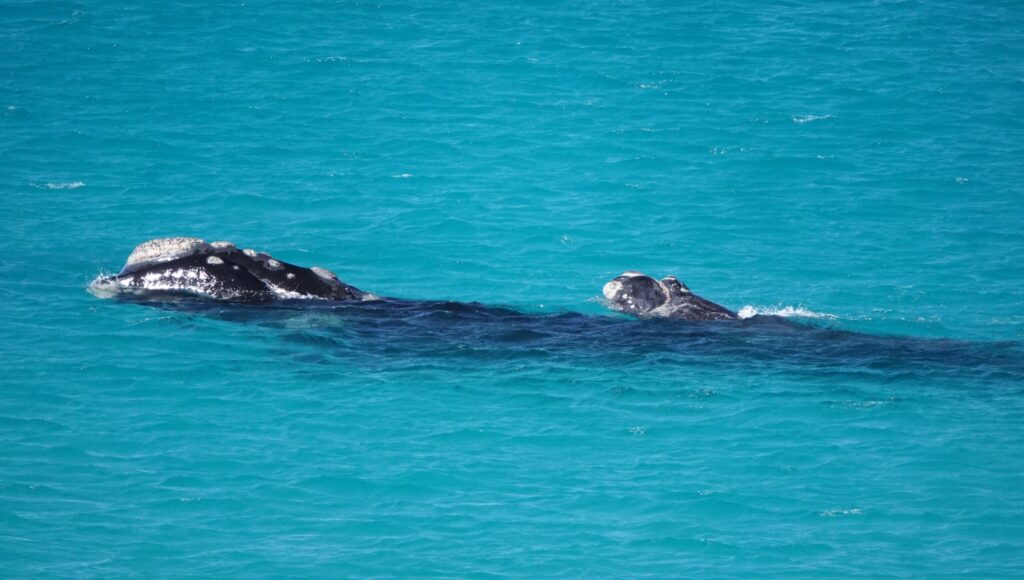
In any area where SRWs engage in important life-sustaining functions i.e., aggregating, resting, mating, calving, migrating, or simply moving from one core habitat area to another, these threats can have far-reaching negative consequences. Noise may mask vital communication between whales – i.e., the fleeing mother and calf – and make preferred habitats and migration routes unsuitable, ultimately leading to habitat avoidance or even abandonment.
Since the waters on the southern coast of Whalers Way – immediately below the proposed rocket launching pad – are part of the main east-west corridor for migrating whales headed to their primary calving grounds deep in the Great Australian Bight, to consider siting a rocket launching facility in this spot, is preposterous.
The proximity of Sleaford Bay aggregation and nursery area just east of the launch facility is also problematic. Many will remember photos of a rare white calf resident at Sleaford Bay in this year’s whale season. Two of our Encounter Bay mothers, ‘Winkulari’ and ‘Mazz’ spent many weeks in residence there with their calves during the 2021 season.
Below are Winkluri’s calf ‘Gypsy’ at Sleaford Bay in September 2021,
and the rare white calf ‘Simi’ in July 2022.




Whales often rest in Sleaford Bay before continuing their journey westwards. It would be a serious loss for the species were whales to be displaced from this habitat due to habitat disruption and/or degradation by noise, debris – including strike – and /or chemical pollution.
The importance of the above overlapping habitat areas, but particularly the whale corridor, can’t be overstated. It’s really not good enough to say, as Southern Launch’s Marine Ecological report states, that “not all” the whales that migrate to the Head of Bight – an estimated 95% of the western arm of the Australian population – “…would pass through the PMIZ.” (Potential Marine Impact Zone), encompassing the east-west corridor. (See page 39 Appendix S) This is no justification for deterring or risking harm to the subpopulation that does use the corridor. Disruption of the main corridor and thus physical displacement of SRWs from their primary calving grounds has the potential to reduce breeding success thus threatening the continued recovery of the species.
Risk, not calibrated by common sense is recklessness. Recklessness will never launch rockets safely, nor will it ever serve truly sincere aspirations of environmental responsibility.
If you have read this far, you know why the wildlife of Whalers Way needs your help.
Please either jump to the bottom of this article to sign the three all-important email petition links, or if you are interested to know more, read on.
Ecological stewardship should have as its priority environmentally conscious site selection. Anything less is hypocrisy.
The fact that Southern Launch was granted even temporary permission to launch rockets from Whalers Way, raises some serious questions. Questions that, in the spirit of government transparency and continued public trust, need equally serious answers. Our laws should have ruled out this conservation area as a possible location for this development when it was first put forward.
Southern Launch’s CEO, Lloyd Damp, proudly broadcasts he intends for Whalers Way, which he wants re-zoned to allow for industrial use, to be “on a par” with Cape Canaveral. https://australianaviation.com.au/2021/12/first-australian-rocket-launch-site-can-match-cape-canaveral-says-ceo/
A large-scale industrial footprint threatens to trample one
of our most prized areas of Australian wilderness.

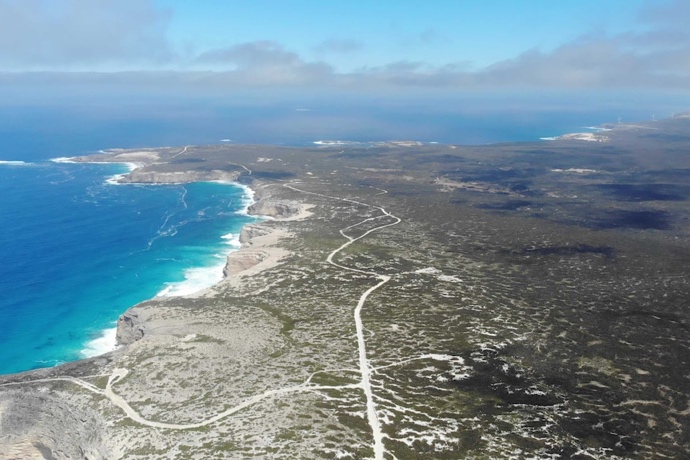
Why is Whalers Way, an area zoned for conservation, not protected? Should this launch complex be approved, what other supposedly protected sites around the state will be at risk of suffering the same fate? Lincoln National Park was identified by the company as a potentially suitable site. What would stop Southern Launch expanding its operations into Lincoln Park in the future?
Damp has said “…you can’t go and convert a national park into a rocket launch site.” An interesting notion since, in essence, his company is already in the process of doing just this to Whalers Way. Evidently, it wouldn’t be strongly held principles that would stop Southern Launch from siting its operations in nearby Lincoln National Park, only more complicated legal issues. https://indaily.com.au/news/business/2019/03/26/10-minutes-with-southern-launch-ceo-lloyd-damp/
Approximately only one million dollars paid to the Native Vegetation Council to offset the removal of habitat and threats to species at risk, will allow bulldozers in to clear 23.7 ha of heritage listed land. Proposed extensions are already in the wind. Plainly our environmental laws are being too loosely and inconsistently applied in Australia, at least where economic considerations are competing for priority.
The native vegetation of Whalers Way.

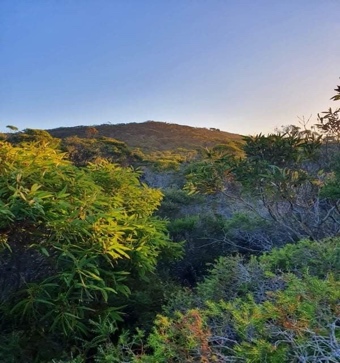
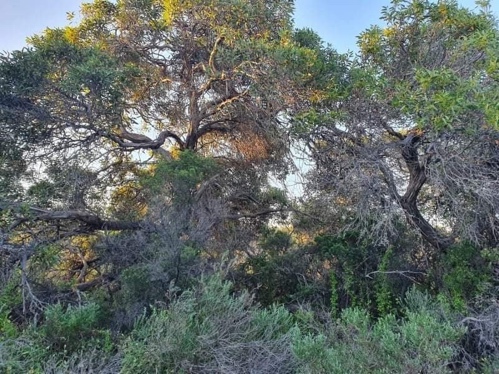
In South Australia, barring exemptions under licence granted for scientific cataloguing etc., we are not permitted to fly even the smallest drone within 300 metres of a whale or other marine mammal. How then can lawmakers justify granting permission for chemically hazardous, loud, polluting, experimental, and all too often, unpredictable space rockets to launch from within a fragile conservation area, before discarding their stages, hopefully without incident, into the Southern Ocean?
Damp himself openly acknowledges the unpredictable nature of experimental rocket launches stating, “We as a nation need to be prepared that … we’ve lost one rocket on the launch pad, we will lose many more rockets mid-flight, more rockets on the pad, some of them might get into space and then not get into orbit as such…” https://www.spaceconnectonline.com.au/launch/5277-video-never-before-seen-footage-of-whalers-way-launch-attempt
That Southern Launch has managed to work around existing environmental protection laws to engage in what should be, by rule of common sense, a prohibited activity, is confusing to say the least. So too the actions of government bodies who have not only allowed such activity but encouraged it. The project was declared a major development by the state of South Australia on 22 August 2019, prior to any full and impartial environmental impact report being undertaken.
Southern Launch promotes itself as a responsible, environmentally ethical company that “…aspires to be the leader in showing how the space industry can work in harmony with holistic conservation and cultural preservation.” https://www.southernlaunch.space/about-us These are words that speak to our current social emphasis on preservation and restoration of the natural environment. However, as the current discussion has unearthed, Southern Launch’s actions seem to be out of step with its professed ideals.
How Southern Launch moved local councils or state/ federal authorities to entertain its proposal for Whalers Way, let alone allow it to construct a launch pad and launch rockets while prohibitions still exist, can only be speculated upon. It seems safe to assume some private assurance that this project will ultimately receive full approval has been given. How else could Southern Launch’s level of investment be justified?
We need to be able to trust in our environmental protection laws and the integrity of the people who are charged with enforcing them.
Whatever the means by which Southern Launch has engineered temporary approval for its facility, its proposal is plainly at odds with the spirit of the heritage listing and developmental zoning currently protecting this tract of land.
Whalers Way. SRWs visit the bay beneath these cliffs.

Cape Wiles – within the impact zone; a haul-out site for seals.

In an area of high fire risk, the ecologically fragile ecosystem of Whalers Way supports no less than 48 threatened/ endangered species. How can Southern Launch possibly justify repurposing the use of this location for a hazardous industry? Plainly from an environmental standpoint, it can’t.
Based on this alone, the credibility of Southern Launch’s glossy mission statement is thrown into serious question.
In their EIS statement, Southern Launch advises that up to 60% of spent rocket stages will be discarded into the Southern Ocean, including the waters of the Thorny Passage Marine Park surrounding Liguanea Island fauna reserve, home to the Australian Sea Lion, Long-Nosed Fur Seal, Short-tailed Shearwater and Crested Turn. The document states, “…there may be occasional debris strike impacts on individual animals on the sea surface but no impact at population level.” (page 6, Appendix S, Southern Launch EIS). Considering that the trajectory paths of test rockets are in dangerous proximity to the island, and directly over areas of the Thorny Passage Marine Park, this statement is hardly reassuring. How can the company reasonably claim there will be “no impact at population level” when it openly admits the technology it is using is unpredictable and experimental.
Obviously, a major hazard associated with building a rocket launch facility in an area of scrub-covered Australian wilderness, is that of bushfire. Australians are painfully aware that we are living in the age of mega fires, yet Southern Launch barely addresses this most dire risk in its EIS. The consequences of an explosion at the launch site could be utterly devastating. Should fires take hold in inaccessible locations, entire populations of endemic wildlife and human lives will be at risk.
The fragile flora of Whalers Way.

A failed launch in Sept 2021 caused this.
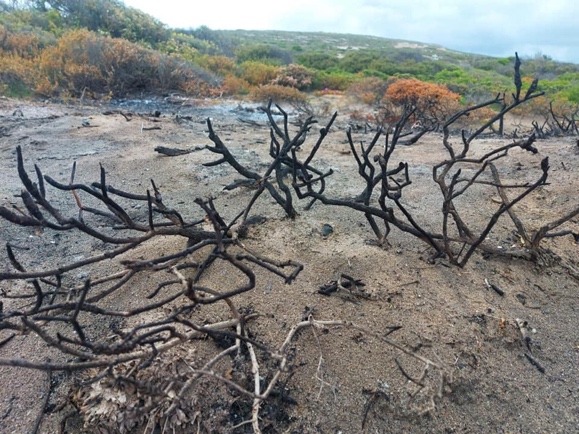
Launches will go wrong. “It’s a matter of when, not if, a rocket will fail…” says Lloyd Damp, CEO of Southern Launch. https://cosmosmagazine.com/space/rocket-launch-safety/
As he warns, “This is experimentation. I keep reminding people that to believe that any high-tech piece of equipment will work on its first attempt; you don’t know engineering.” https://staging.taktikz.com/whalers-way-can-match-cape-canaveral-says-southern-launch-ceo/
It is a tenet of risk evaluation that the best form of risk prevention is elimination of the hazard. Since the overwhelming hazards associated with this project can’t be eliminated or appropriately mitigated, Whalers Way is simply the wrong location for this industrial development. In the words of the Eyre Peninsula Environmental Alliance, a citizen conservation group working tirelessly to protect the threatened flora and fauna of Whalers Way, “Threatened animals need their remaining habitat protected as a first step toward preventing their extinction.”
There is still time. Please refer to the ‘call to action’ links below to let our lawmakers know how outraged you feel.
1. Please email these letters to key decision-makers:
https://natureconservationsa.wixsite.com/website/save-whalers-way
https://www.ncssa.asn.au/save-whalers-way/
2. Plus, email this letter to Environmental Minister Tanya Plibersek to let her know law reforms are urgently needed:
https://wilderness.good.do/extinction2022/naturelaws/?v=0a730fec
3. Please sign the following petition link:
https://www.change.org/p/south-australian-minister-for-planning-save-whalers-way
4. Link to EPA requesting prewritten letter to Tanya Plibersek the Federal Minister for Environment and Water:
https://www.facebook.com/EyrePeninsulaEPA/posts/pfbid02PRhzxD31gUvWAYQUAgjPtqk3Sphp7ASXZEBYHSAXLGpFy9b9q5Ho5spzGQKP92oCl
5. Meet at Parliament House steps 11am Tuesday Nov 15th:
https://www.facebook.com/events/1479911509152271/?ti=ls
______________________________________________________
For further reading and news updates:
- Link to Eyre Peninsula Environmental Protection Alliance (EPEPA) FB. An excellent resource site dedicated to the protection and conservation of Whalers Way.
https://www.facebook.com/EyrePeninsulaEPA
- Link to EPEPA Community Environmental Concern Video. https://www.facebook.com/100010063661510/videos/268549615215358
- Link to article illustrating the danger that can arise when a rocket launching company understates the hazards of its operations in its EIS … https://defenders.org/newsroom/defenders-of-wildlife-demands-depth-environmental-review-spacex-launch-site-after-rocket “This latest fire illustrates the disastrous effects these experimental launches have on protected lands and wildlife, including rare and endangered species. These are not anomalous events. They are a regular by product of SpaceX.”
______________________________________________________
Article researched and written by Karen Lettice
with the endorsement of Encounter Whales –
Southern Right Whale Conservation & Protection.
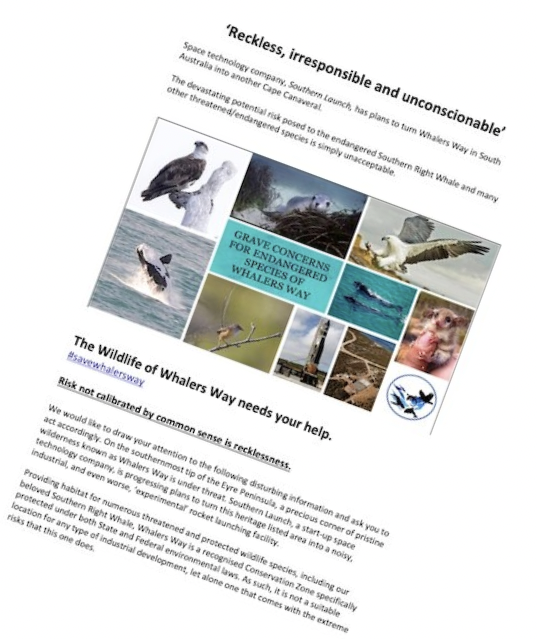 Download PDF of the full article.
Download PDF of the full article.
______________________________________________________
Montage photo credits (clockwise from lower left):
SRW ‘Selina’ breaching – Andrew Newton
Eastern Osprey – Fran Solly
Australian Sea Lion – Australian Marine Conservation Society
White-bellied Sea Eagle – Nicholas Birks
SRW juveniles – Andrew Chuck
Western Pygmy Possum – Amanda McLean
EPEPA logo – EPEPA, Rocket Launch Pad
Whalers Way – Southern Launch
Hapith 1 Rocket – Southern Launch
Southern Emu-wren – Mat Gilfedder
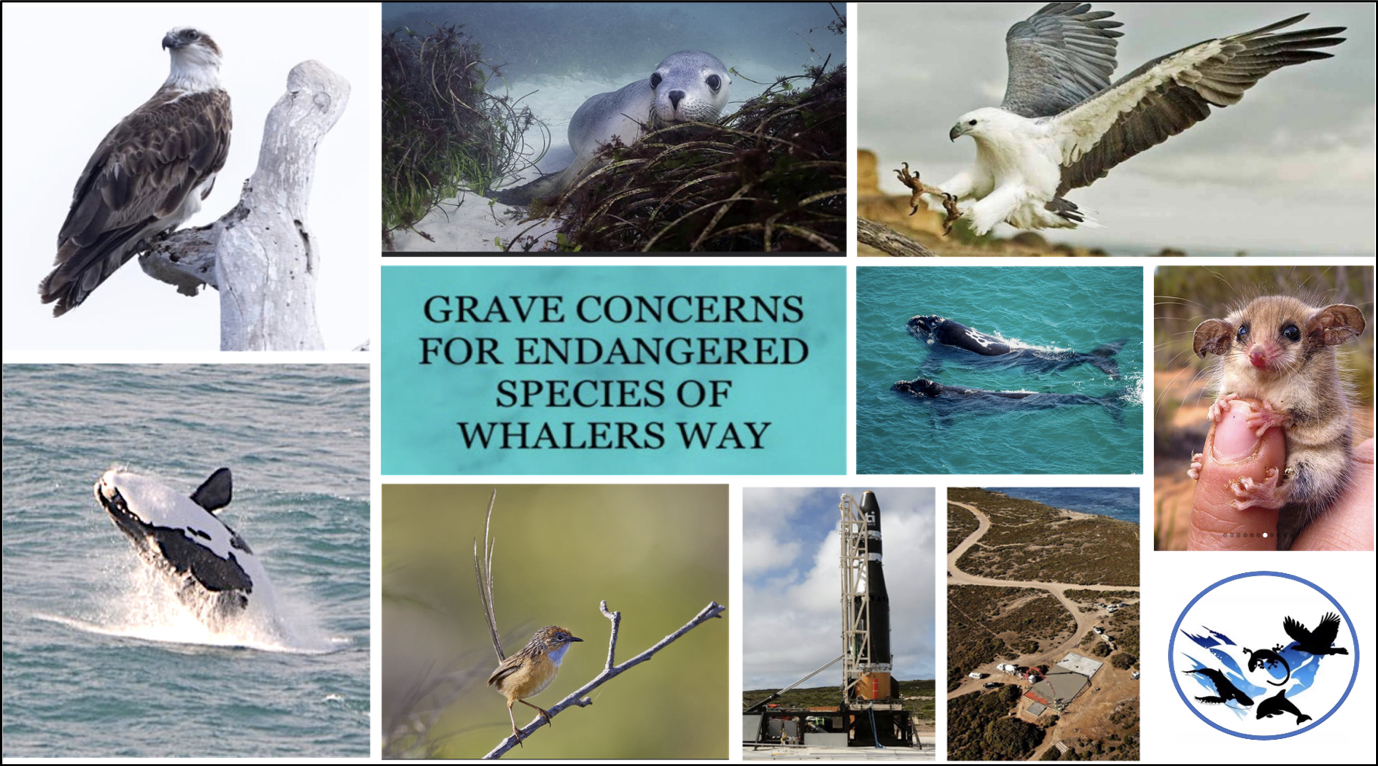

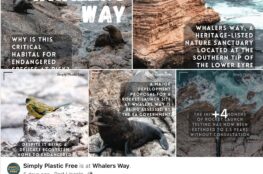
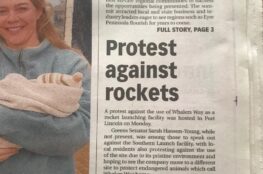
10 November, 2022
This is a fabulous article Karen
We need to share it far and wide
I’m a local resident living in relatively close proximity to Whalers Way
I’m very concerned about the way this proposal has progressed since it’s inception
Southern Launch and some state and federal politicians have not been upfront and truthful in regards to the full scope of this plan and its implications
There are still many residents on Eyre Peninsula who still fully support Southern Launch, which I find rather disappointing
Southern Launch have continually flood media outlets with expensive flashy marketing messages which they are happy to print or broadcast. Opponents on the other hand have not been given the same opportunity to voice their concerns and be heard
It feels like it’s a done deal and the public consultations and submissions were orchestrated and a farce especially considering how much money governments and investors have already poured into this development
It must be stopped Whalers Way is not THE site for launching experimental rockets and it should not be given the approval under any circumstances
” Mr Lloyd Damp ” has been deceptive all along, he appears to have a big ego, no conscience and almost shows contempt for those who have questioned and shown opposition to using Whalers Way as his chosen site
21 January, 2024
🌟 Oh my goodness, this is absolutely insightful! I appreciate the effort you put into sharing this valuable data. I always wonderful to come across skillfully written and educational content like this. Continue the amazing effort! 🔥👏💯
23 January, 2024
Incredibly enthusiastic to share my thoughts here! 🌟 This content is astonishingly innovative, blending creativity with insight in a way that’s captivating and educational. Every detail seems meticulously crafted, showcasing a deep understanding and passion for the subject. It’s rare to find such a perfect blend of information and entertainment! Major applause to everyone involved in creating this masterpiece. Your hard work and dedication are clearly evident, and it’s an absolute joy to witness. Looking forward to seeing more of this incredible work in the future! Keep rocking us all! 🚀👏💫 #Inspired #CreativityAtItsBest